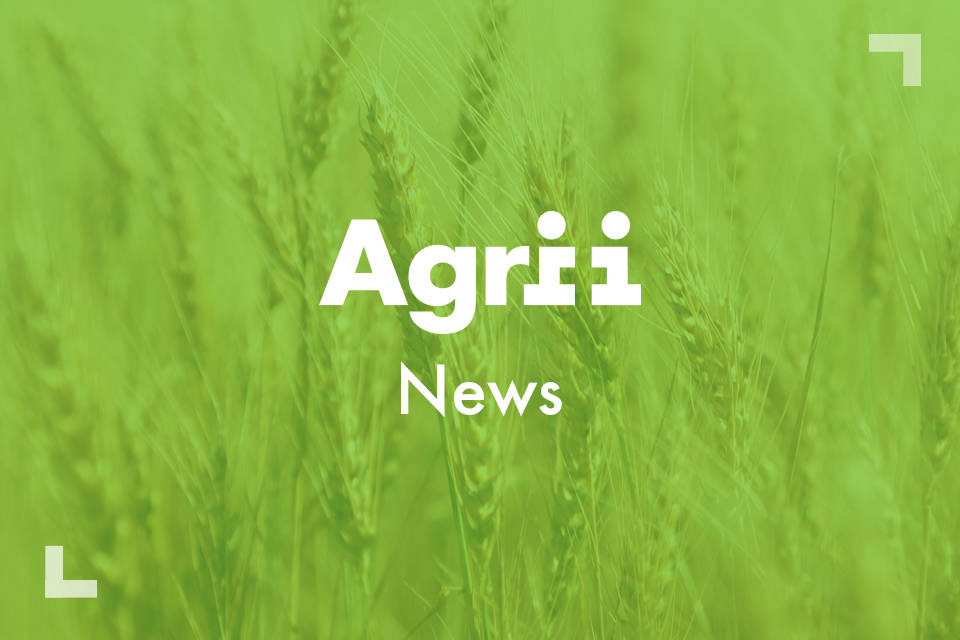
Securing the Spring Wheat Advantage
News - 03.01.17
Spring wheat was the best gross margin performer in the second year of field-scale rotation studies at Agrii’s Stow Longa Black-grass Technology Centre. It significantly out-performed the spring barley grown alongside it as well as the best late-autumn drilled crop of winter wheat grown in the 5 ha trial. And it delivered the most effective control of the problem weed.
However, the company’s head of agronomy, Colin Lloyd and northern R&D manager,
Jim Carswell insist that the crop must be managed correctly to ensure it delivers. Amongst other things, they underline the importance of maximising black-grass control, securing the milling premium and avoiding problems from rust, BYDV, ergot and gout fly.
Across its 1 ha rotational block at Stow Longa, last season’s mid-March sown crop of Mulika averaged 7.83 t/ha to deliver a gross margin of £534/ha and a summer black-grass population of 24 ears/m2. This compared with 6.32 t/ha, £404/ha and 37 ears/m2 from spring barley sown on the same date and 7.6 t/ha, £237/ha and 37 ears/m2 from the best crop of the most black-grass competitive winter wheat, Edgar sown in late-October.
Average crop performance in 2015/16 Stow Longa rotational study:
| Crop | Yield | Growing Cost | Gross Margin | Black-grass |
| Spring-sown Mulika | 7.83 t/ha | £468/ha | £534/ha | 24 ears/m2 |
| Spring barley | 6.32 t/ha | £462/ha | £404/ha | 37 ears/m2 |
| Late-autumn sown Edgar | 7.6 t/ha | £745/ha | £237/ha | 37 ears/m2 |
“Yields of more than 9 t/ha and protein contents of over 14% in other recent trials across our research network underline the clear potential of Mulika which commands the lion’s share of today’s spring wheat market,” pointed out Colin Lloyd.
“On the other hand, we’ve seen crops badly hit by gout fly giving little more than 2t/ha. Equally, cleaning out ergot typically adds £10-15/t to production costs. And the AHDB quality survey shows only 23% of Mulika samples from harvest 2016 making the Group 1 specification. So it’s clearly vital to manage the crop well.”
Like all spring crops, the short growing season means few, if any, opportunities to compensate for setbacks. Which, in turn, puts the premium on the earliest and best possible start. This is especially important with spring wheat to minimise competition from black-grass and avoid the worst effects of both gout fly and ergot.
Setting-up the ground well in the autumn – either as a cultivated stubble or with a cover crop – leaving it undisturbed through the winter and drilling with minimal soil movement is the Agrii team’s preferred recipe. Waking-up black-grass seed by moving too much soil at drilling has, indeed, been shown to reduce Mulika yields by almost 2t/ha at Stow Longa.
“Timely glyphosate treatment is essential to eliminate both cover crop and weed growth ahead of drilling,” stressed Jim Carswell. “We like to follow-up our initial spray to kill any cover with a second treatment just before sowing or as a pre-em to target black-grass previously shielded by the canopy. Slower glyphosate action at low temperatures makes it important to spray off covers 3-4 weeks ahead of intended drilling for the best results.
“Kill before you drill also has to be the watchword with slugs to avoid what can be devastating problems on heavy ground coming into the spring. Just like winter crops, effective rolling after drilling is invaluable here, as well as in achieving the best seed to soil contact.
“Unlike spring barley, you don’t need to wait for the ground to warm-up for wheat,” he added. “So, sow it as soon as you get decent seedbed conditions – the earlier the better.
“Last year the three spring wheats in our Throws Farm alternative wheat drilling date trials averaged 9.34 t/ha from sowing in the first week of February and 7.74 t/ha from mid-March. Earlier sowing also produced noticeably higher specific weights.
“In any event, you should always sow before April. As well as making the crop far more vulnerable to gout fly damage, late-drilling invariably means extended flowering and far greater opportunities for ergot infection – which can be especially problematic in bad black-grass ground, given the weed’s particular ability to host the disease.”
Agrii trials show no consistent performance differences between Mulika sowing rates of 350 and 500 seeds/m2. On this basis, the specialists consider 400-450 seeds/m2 about right under most circumstances, suggesting this may usefully be increased to 500 seeds/m2 to maximise crop competitiveness where black-grass populations are known to be high.
On soils prone to manganese deficiency, they recommend a quality Mn seed dressing, pointing to responses of over 0.6 t/ha from iMan at 3ml/kg in 2016 trials in Lincolnshire. They also advocate Take-off seed treatment and/or the low temperature-active PGR, Adjust at GS13-21 to provide an early boost to rooting.
With the amount of BYDV seen following the recent run of mild winters and the extent to which it can damage later-sown spring wheats, in particular, including a pyrethroid with the GS13-21 spray is recommended too: as is extra foliar manganese and zinc where necessary.
“Our most recent spring wheat nutrition work highlights a yield advantage of around 0.5 t/ha from 50-60 kg/ha of phosphate in seedbed, either as DAP or TSP,” explained Colin Lloyd. “For the greatest value, our trials underline this should be drilled below the seed rather than surface applied after drilling.
“If you don’t have a combi-drill, however, you’ll be better off spreading TSP with a specialist phosphate coating like P-Reserve to optimise phosphate availability before drilling into it. We’ve also seen valuable yield responses from a 10.15.21 compound with the phosphorus enhancer, Avail.
“As far as nitrogen is concerned, all our work suggests 160-200 kg/ha is quite sufficient, with 40-70 kg/ha (depending on sowing date) applied in the seedbed and the bulk at GS12.
“Higher levels than this have given us significant grain protein boosts – to 14% and beyond. But as there is nothing to gain from proteins of more than 13%, they really don’t make sense unless you generally struggle to achieve the milling specification; in which case, an extra 40 kg N/ha as Protol at GS73-75 would be advisable.”
A standard two-spray fungicide programme is all Colin Lloyd and Jim Carswell consider necessary for spring wheat, with strobilurins included at both T1 and T2 to target rust and support both grain quality. These regimes gave an average response of 0.5 t/ha from March-sown Mulika in their 2016 trials, together with a specific weight increase of almost 2 kg/hl.
“Although securing the Group 1 spec is important in making the most of spring wheat – with Mulika contracts still offering worthwhile premiums for the coming harvest – we’ve yet to see sufficient benefit from a T3 spray to justify the extra cost,” noted Jim Carswell. “So we’re confident a modest programme will be adequate unless there’s a major disease challenge.
“Instead, the key focus of investment with the crop must be on drilling it into the best possible conditions early enough and getting it away well enough from the start.”
Top Spring Wheat Management Tips
- Eliminate cover crop and weed growth effectively with glyphosate before planting;
- Sow as early as a decent seedbed can be secured, always before April;
- Drill into well set-up ground, moving the least amount of soil;
- Maintain good slug control and consolidate the seedbed well after sowing;
- Sow at 400-450 seeds/m2 as a rule – 500 seeds/m2 on bad black-grass ground;
- Use a quality manganese seed dressing on deficiency-prone soils;
- Consider Take-off seed treatment and/or an early PGR as an extra rooting boost;
- Apply 50-60 kg/ha of phosphate in the seedbed, preferably drilled below the seed;
- Apply 160-200 kg/ha of nitrogen, 40-70 kg in the seedbed and the bulk at GS 12;
- Top-up with an extra 40kg/ha N as Protol at GS75 if protein contents are a concern;
- Include a pyrethroid with any GS 13-21 spray to combat BYDV; and,
- Employ a standard T1 + T2 fungicide programme, with a strobilurin in each spray;
Top Spring Wheat Management Tips
- Eliminate cover crop and weed growth effectively with glyphosate before planting;
- Sow as early as a decent seedbed can be secured, always before April;
- Drill into well set-up ground, moving the least amount of soil;
- Maintain good slug control and consolidate the seedbed well after sowing;
- Sow at 400-450 seeds/m2 as a rule – 500 seeds/m2 on bad black-grass ground;
- Use a quality manganese seed dressing on deficiency-prone soils;
- Consider Take-off seed treatment and/or an early PGR as an extra rooting boost;
- Apply 50-60 kg/ha of phosphate in the seedbed, preferably drilled below the seed;
- Apply 160-200 kg/ha of nitrogen, 40-70 kg in the seedbed and the bulk at GS 12;
- Top-up with an extra 40kg/ha N as Protol at GS75 if protein contents are a concern;
- Include a pyrethroid with any GS 13-21 spray to combat BYDV; and,
- Employ a standard T1 + T2 fungicide programme, with a strobilurin in each spray;
Join Our Community

Agrii X
We love engaging with clients and partners. Give us a follow and let's share stories for the community.

Agrii Instagram
A picture paints a thousand words. Follow us on Instagram to see what we are up to.

Agrii Facebook
Follow us on the worlds biggest social media site for the latest news and events straight to your feed.

Agrii LinkedIn
If you are all about the business, connect with us on LinkedIn to build your network
Stay In Touch

Journal Sign-Up
Receive email updates on topical news and information from around Agrii and UK Farming.

Listen To Our Podcasts
Listen to the Tramlines Podcast. Fortnightly chat about agriculture and trials with your host Tony Smith.

Agrii Insights
Read essential agri intelligence for profitable farming.

Find an Event
Join us for our upcoming events and tours.



